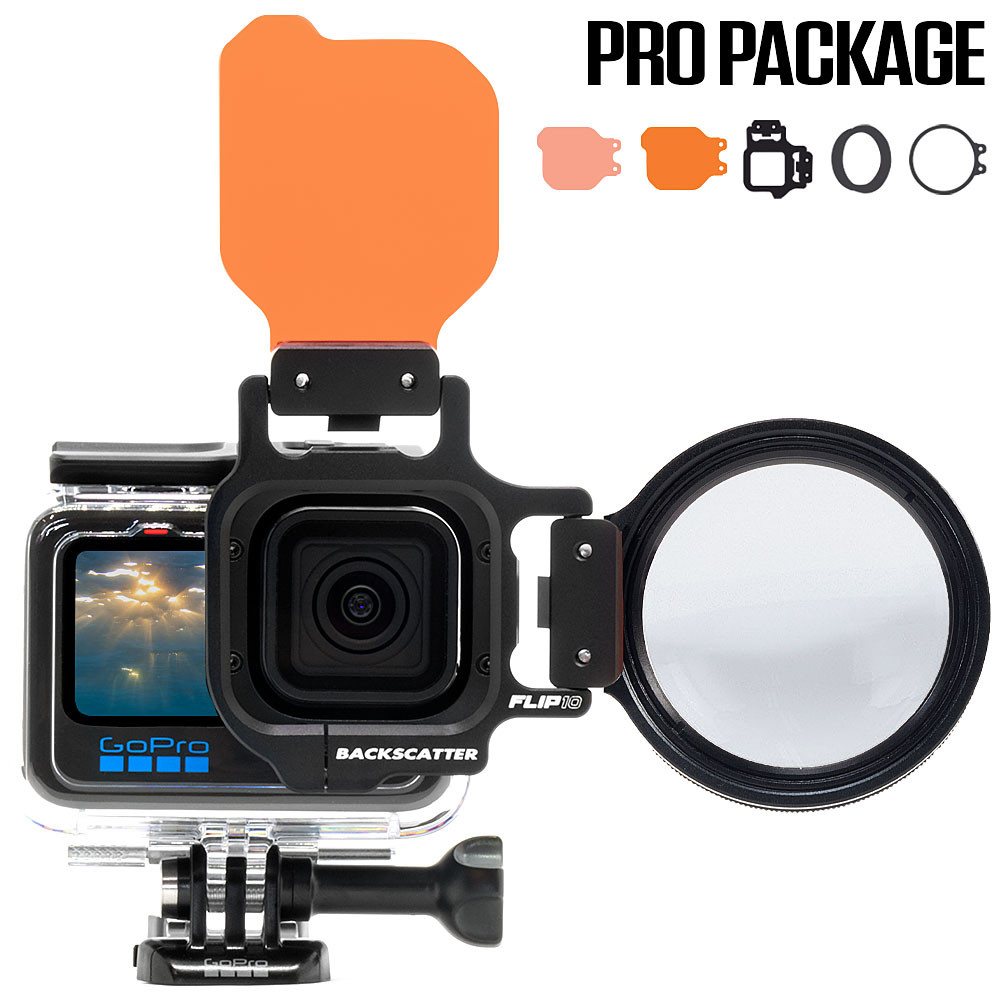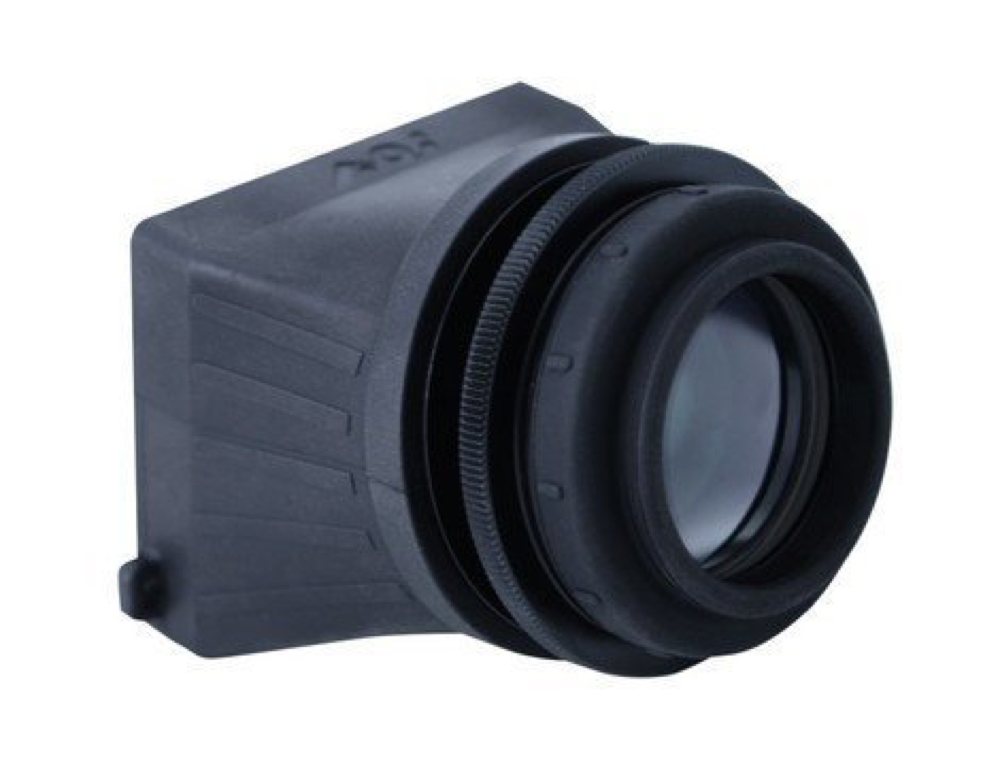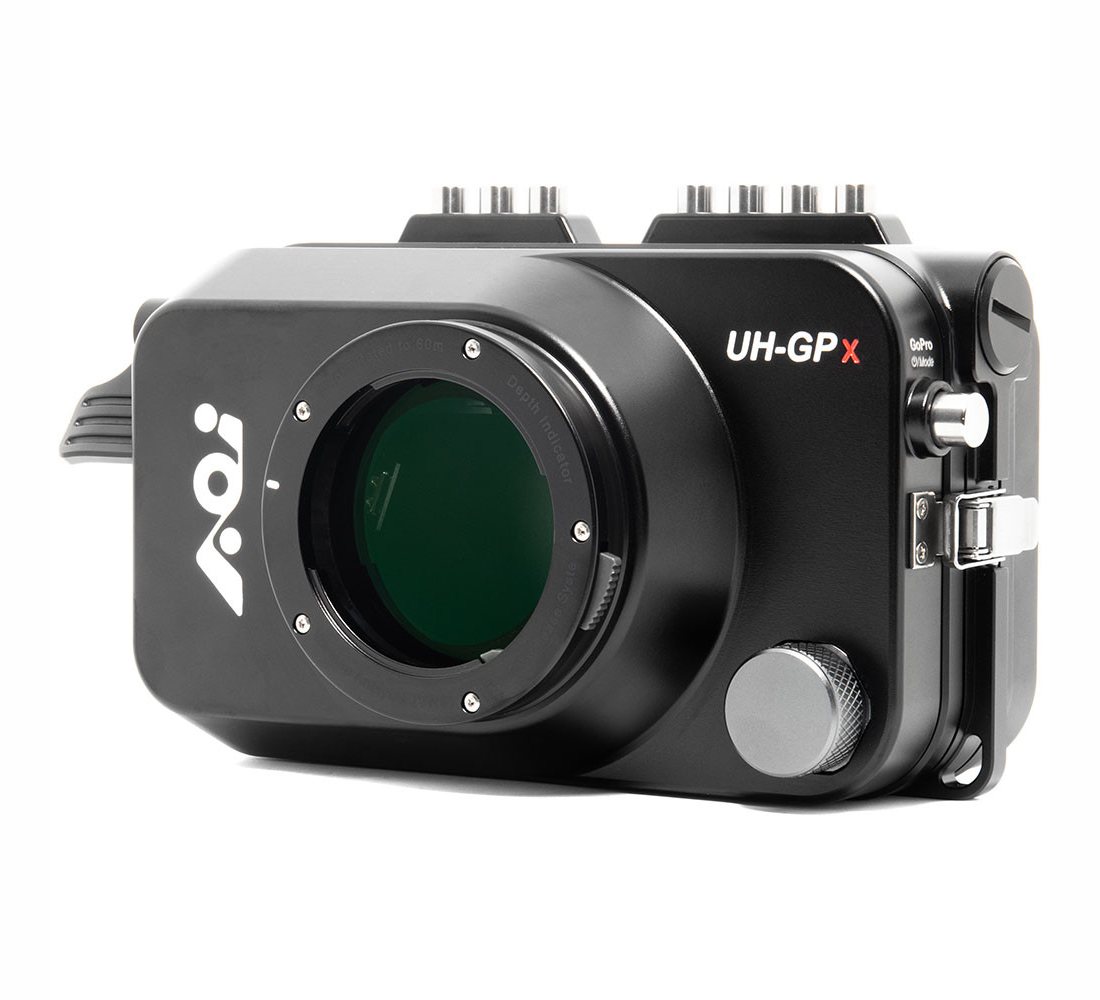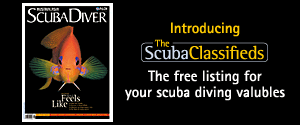- Home
- Directory
- Shop
- Underwater Cameras - Photographic Accessories
- Smartphone Housings
- Sea Scooters
- Hookah Dive Systems
- Underwater Metal Detectors
- Dive Gear
- Dive Accessories
- Diving DVD & Blu-Ray Discs
- Diving Books
- Underwater Drones
- Drones
- Subscriptions - Magazines
- Protective Cases
- Corrective Lenses
- Dive Wear
- Underwater Membership
- Assistive Technology - NDIS
- On Sale
- Underwater Gift Cards
- Underwater Art
- Power Stations
- Underwater Bargain Bin
- Brands
- 10bar
- AOI
- AquaTech
- AxisGo
- Backscatter Underwater Video and Photo
- BLU3
- Cayago
- Chasing
- Cinebags
- Digipower
- DJI
- Dyron
- Edge Smart Drive
- Eneloop
- Energizer
- Exotech Innovations
- Fantasea
- Fotocore
- Garmin
- Geneinno
- GoPro
- Hagul
- Hydro Sapiens
- Hydrotac
- Ikelite
- Indigo Industries
- Inon
- Insta360
- Intova
- Isotta Housings
- Jobe
- JOBY
- Kraken Sports
- LEFEET
- Mirage Dive
- Nautica Seascooters
- Nautilus Lifeline
- NautiSmart
- Nitecore
- Nokta Makro
- Oceanic
- Olympus
- OM System
- Orca Torch
- Paralenz
- PowerDive
- QYSEA
- Scubajet
- Scubalamp
- Sea & Sea
- SeaDoo Seascooter
- SeaLife
- Seavu
- Shark Shield
- Sherwood Scuba
- Spare Air
- StickTite
- Sublue
- Suunto
- SwellPro
- T-HOUSING
- Tusa
- U.N Photographics
- Venture Heat
- XTAR
- Yamaha Seascooter
- Youcan Robot
Cowries and Ovulids
Contributed by Erika Antoniazzo
Cowrie Shells
Long prized by primitive people for their shape and attractive colors, Cowrie shells were widely used for money in ancient times. They are also worn as jewelry or otherwise used as ornaments or charms, as they are viewed as symbols of womanhood, fertility, birth and wealth.
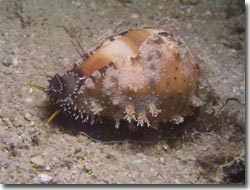 Cowrie
shells are sometimes used in a way similar to dice, e.g., in board games like
Pachisi, or in divination. A number of shells (6 or 7 in Pachisi) are thrown,
with those landing aperture upwards indicating the actual number rolled.
Cowrie
shells are sometimes used in a way similar to dice, e.g., in board games like
Pachisi, or in divination. A number of shells (6 or 7 in Pachisi) are thrown,
with those landing aperture upwards indicating the actual number rolled.
Cowries have also been used in the recent past as a frame over which sock heels were stretched for darning. The cowrie's smooth surface allows the needle to be positioned under the cloth more easily.
Cowrie shells are a favourite of shell collectors because a very deep coating
of enamel on the outer surface gives the the shell a brilliantly polished appearance.
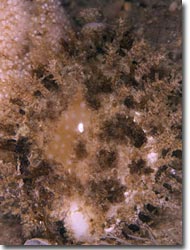 You
will find them on many shell markets in third world countries and on shell collector
websites. While cowries are abundant in the tropics, some species are now quite
rare and get a very high price from collectors.
You
will find them on many shell markets in third world countries and on shell collector
websites. While cowries are abundant in the tropics, some species are now quite
rare and get a very high price from collectors.
The reason why these shells maintain such a nice colourfull gloss is that two
lobes of the cowrie's mantle (fleshy material that covers the shell) extend
out and over the dorsal surface of the shell, meeting at midline, and they continually
deposit enamel thus secreting the shell from the top-down while protecting the
shell from abrasion, whereas most other shells are secreted from the inside-out,
hence the glossy interior of many shells.
Interestingly, the mantle has a totally different color and pattern than the shell. If startled or touched the cowrie can suddenly change colors by withdrawing its mantle completely inside the shell, thus confusing a predator.
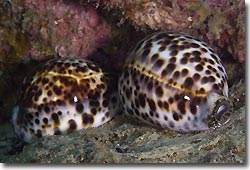 Cowries
usually remain hidden during the day in holes, crevices, rubble, or under rocks
and corals. While diving we can occasionally find them during the day, but there's
a much better chance of seeing them on night dives when they emerge to feed
with the mantle fully extended.
Cowries
usually remain hidden during the day in holes, crevices, rubble, or under rocks
and corals. While diving we can occasionally find them during the day, but there's
a much better chance of seeing them on night dives when they emerge to feed
with the mantle fully extended.
In some cases the mantle flaps are brightly coloured, but often they have dull mottled colours with branching papillae, that provide camouflage and assist in respiration. The color of the mantle sometimes matches the sponge it feeds upon.
When a female cowrie shell lays a cluster of small eggs she will sit on them until they hatch. So if you're lucky enough to find a cowrie with a bunch of eggs, don't disturb it otherwise it may not come back to its eggs.
Larvae hatch and float around as plankton before settling. Juvenile shells are very thin and brittle. They look a bit like olive shells and continue coiling as they grow. The outer lip curves inwards and the shell thickens and forms a new colour pattern. Although the shell seems to be bilaterally symmetrical, the newest whorl completely covers the previous whorls. Teeth are formed on the outer lip, on both sides of the lengthwise aperture slit. The opposite side of the aperture is smooth and there is no operculum.
To create more space inside when needed the shell thickens and the interior is dissolved. Young cowries stop coiling at random resulting in a broad size range in adults. The family Cypraeidae has about 200 living species. The basic shape of the shell is the same in all species.
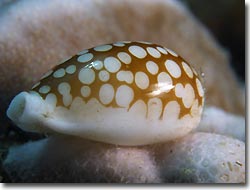
Empty but intact shells are usually the result of predation by cone shells.
There are two main feeding divisions within the family, one group feeding on
sponges while the other group are herbivores, though some groups feed on both.
| Kingdom: | Animalia |
| Phylum: | Mollusca |
| Class: | Gastropoda |
| Subclass: | Orthogastropoda |
| Infraclass: | Apogastropoda |
| Superorder: | Caenogastropoda |
| Order: | Sorbeoconcha |
| Suborder: | Hypsogastropoda |
| Infraorder: | Littorinimorpha |
| Superfamily: | Cypraeoidea |
| Family: | Cypraeidae |
| Genus: | Cypraea |
| Species: |
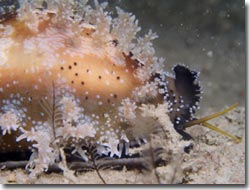
Ovulids
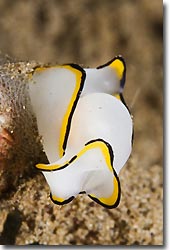

Ovulids are called "false cowries," because of their similarity to the true Cowries, but they are a distinct group. However they are closely related to cowries and belong to the same super family (Cypraeoidea). They usually have smaller shells but otherwise resemble the Cypraeidae and share similar mantle protective habits.
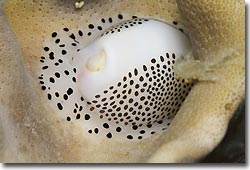 Ovulids
superficially look like sea slugs, especially when the shell is hidden. In many
ways they have evolved defensive strategies which mirror those found in the
nudibranchs.
Ovulids
superficially look like sea slugs, especially when the shell is hidden. In many
ways they have evolved defensive strategies which mirror those found in the
nudibranchs.
The highly colored mantle and sharply contrasting spots in some cowrie species
result from accumulation of otherwise noxious chemicals retained from their
food in the mantle. This feature seems to be an evolutionary adaptation generally
characteristic of the entire Cypraeacea superfamily, and shared with the more
advanced nudibranch families. 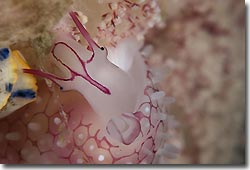 These
chemicals are stored in their skin where they can protect the snail from fish
predation. When under attack the colored mantle seems to camouflage the mollusc
and confound predators.
These
chemicals are stored in their skin where they can protect the snail from fish
predation. When under attack the colored mantle seems to camouflage the mollusc
and confound predators.
Allied cowries are found in all waters. It's easier to spot them when the coral polyps are withdrawn or at night with a good light. Check gorgonians and other soft corals and sponges for any irregularities.
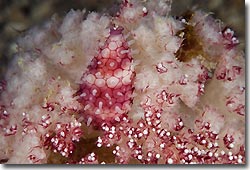 Ovulids
are also called Allied cowries because each species tends to live with a specific
host organism such as soft corals or sponges. Their adaptation to their host
in form and colour is quite astonishing. They take on the shape, colour and
texture of their hosts and usually it's hard to tell where one animal ends and
the other begins. Only a close look will reveal the mollusk on its host. Each
cowrie has a soft mantle that matches the color and texture of its host although
there are notable exceptions. Some species have false polyps, some don't.
Ovulids
are also called Allied cowries because each species tends to live with a specific
host organism such as soft corals or sponges. Their adaptation to their host
in form and colour is quite astonishing. They take on the shape, colour and
texture of their hosts and usually it's hard to tell where one animal ends and
the other begins. Only a close look will reveal the mollusk on its host. Each
cowrie has a soft mantle that matches the color and texture of its host although
there are notable exceptions. Some species have false polyps, some don't.

This allied cowrie mimics texture, colour and polyps of the harp coral
it lives on. When the harp coral retracts its polyps the shell can be clearly
seen. Its reaction is a bit slower than that of the coral it lives on. But
eventually it will retract its poplyps as well to resemble its host as closely
as possible.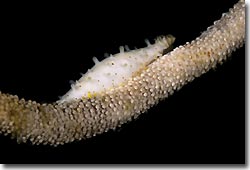
Gorgonians are generally unpalatable and are thus avoided by most predators. By closely resembling the gorgonian, the mollusk also gains protection from predators. Only the mollusk, however, benefits from this relationship.
Allied cowries are, in fact, parasites that harm their host. They feed on the
host's tissues, mucus and polyps and absorb pigments that enable the cowries
to closely match the host's color. The host continually regrows the lost tissue
so the cowrie never runs out of food.
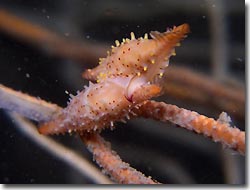
Mating allied cowries on whip coral.
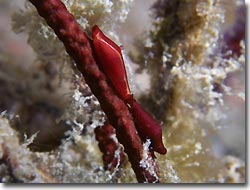 Free-swimming
post-larval juveniles probably detect chemical clues that signal a potential
host is nearby. Hosts are often home to several individuals. When settled, cowries
graze up and down the coral and eventually deposit their eggs on a bare branch,
beginning the cycle again.
Free-swimming
post-larval juveniles probably detect chemical clues that signal a potential
host is nearby. Hosts are often home to several individuals. When settled, cowries
graze up and down the coral and eventually deposit their eggs on a bare branch,
beginning the cycle again.
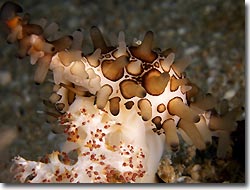 Among
the ovulids there is a small but highly diverse group of highly specialized
animals which feed on sponges and corals, but the most common food are soft
corals (Alcyonaria), whip corals, fan corals (Gorgonaria),
and stone corals (Madreporaria).
Among
the ovulids there is a small but highly diverse group of highly specialized
animals which feed on sponges and corals, but the most common food are soft
corals (Alcyonaria), whip corals, fan corals (Gorgonaria),
and stone corals (Madreporaria).
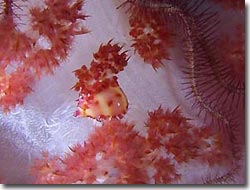
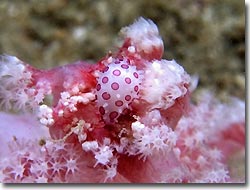
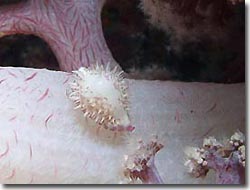
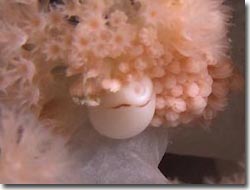
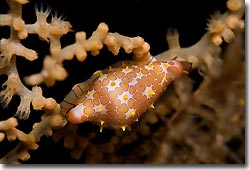

Allied cowries come in different sizes and shapes. The shells of these animals are mid-sized ( 10 cm) to small (3 mm).
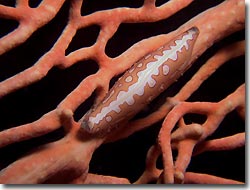
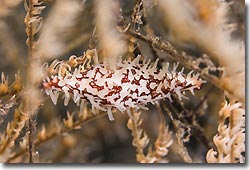
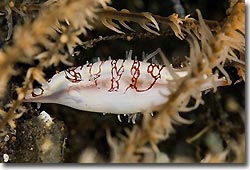
The shell of this allied cowrie is nearly transparent, as the mantle retracts the mollusk can clearly be seen inside the shell.
| Kingdom: | Animalia |
| Phylum: | Mollusca |
| Class: | Gastropoda |
| Subclass: | Orthogastropoda |
|
Superorder: |
Caenogastropoda |
| Order: | Sorbeoconcha |
| Suborder: | Hypsogastropoda |
| Infraorder: | Littorinimorpha |
| Superfamily: | Cypraeoidea |
| Family: | Ovulidae |
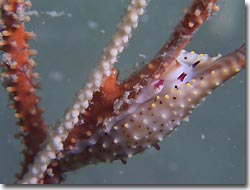
Peeping out at you, but ready to retract my eyes at the first sign of danger.
Shopfront
-
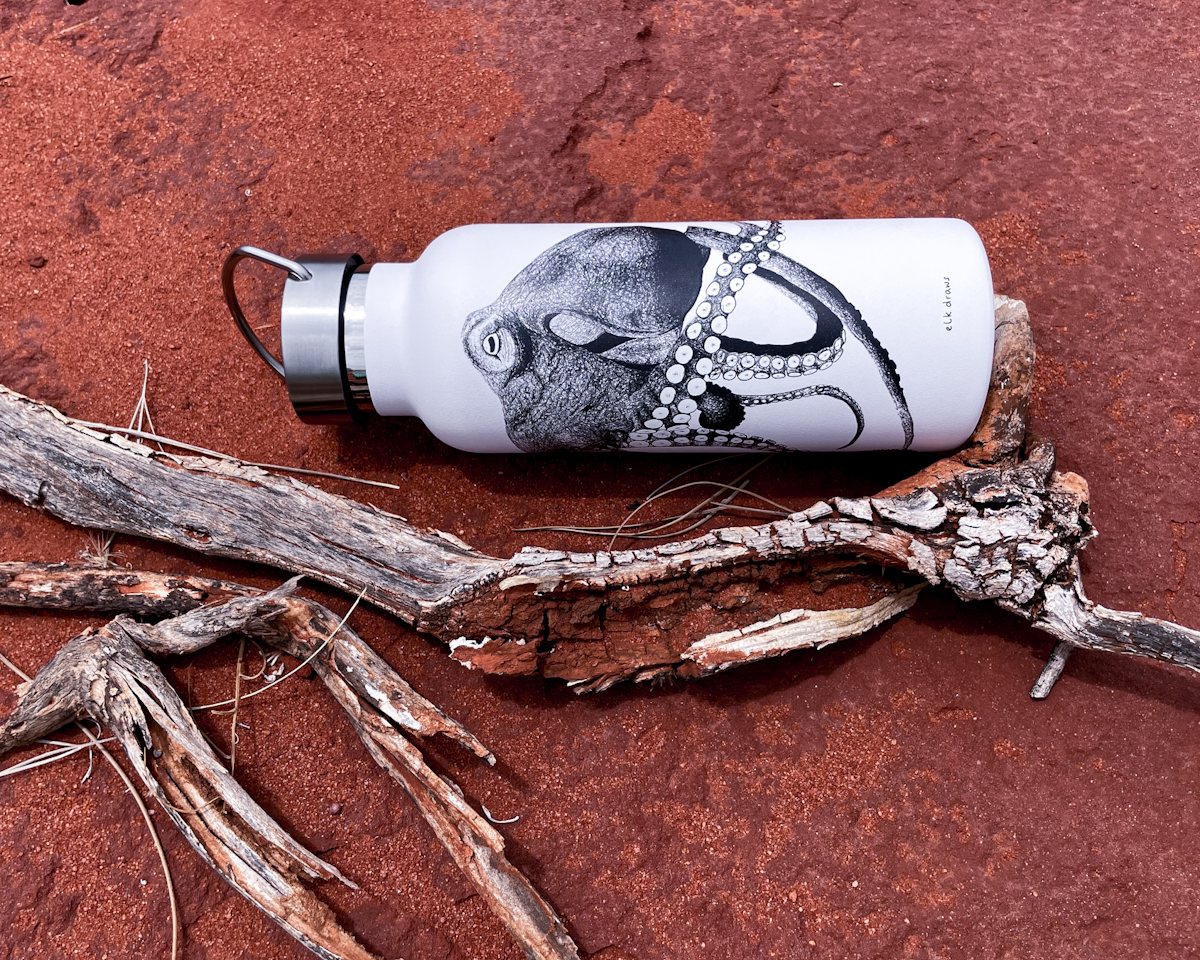 Underwater X Elk Draws Stainless Steel Insulated Water Bottle for Mental Health - Octopus
Underwater X Elk Draws Stainless Steel Insulated Water Bottle for Mental Health - Octopus
- Price A$ 39.95
-
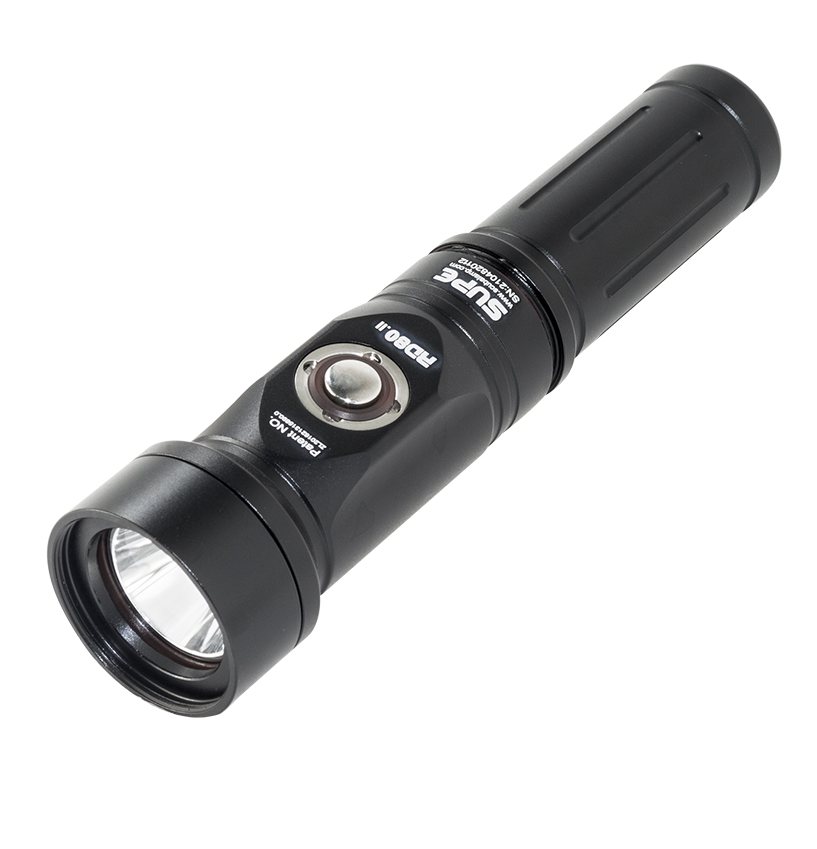 Scubalamp RD80 V2 LED Dive Light - 1500 lumens
Scubalamp RD80 V2 LED Dive Light - 1500 lumens
- Price A$ 119.00
-
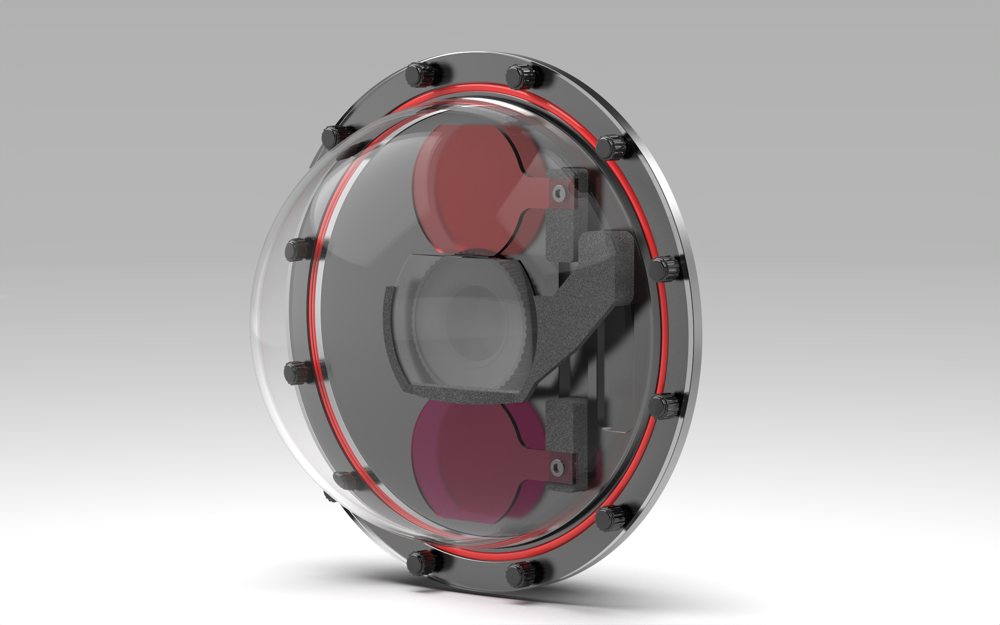 T-Housing DOME1 Aluminium Housing for Insta360 ONE R 1-inch
T-Housing DOME1 Aluminium Housing for Insta360 ONE R 1-inch
- Price A$ 499.00
-
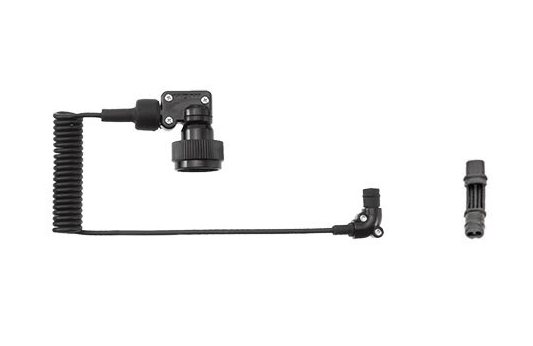 Inon Optical D Cable SS Type L Rubber Bush Set 2
Inon Optical D Cable SS Type L Rubber Bush Set 2
- Price A$ 129.00
-
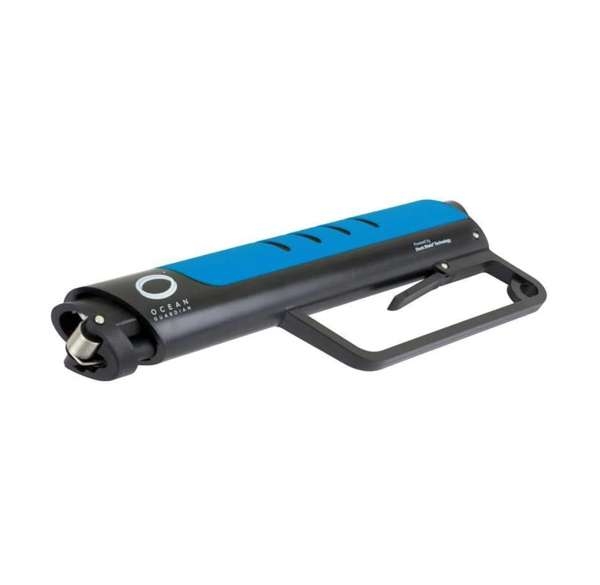 Ocean Guardian eSPEAR - Shark Shield
Ocean Guardian eSPEAR - Shark Shield
- Price A$ 349.00
-
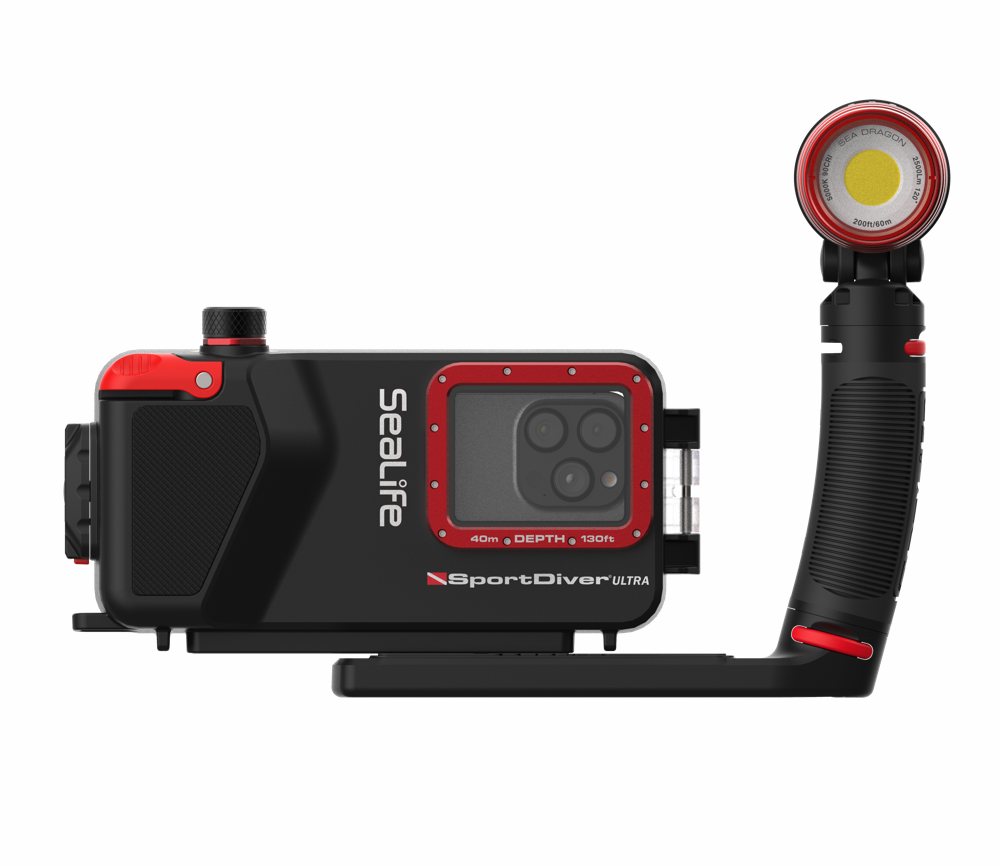 SeaLife - SportDiver ULTRA Pro 2500 Set
SeaLife - SportDiver ULTRA Pro 2500 Set
- Price A$ 1,299.00
-
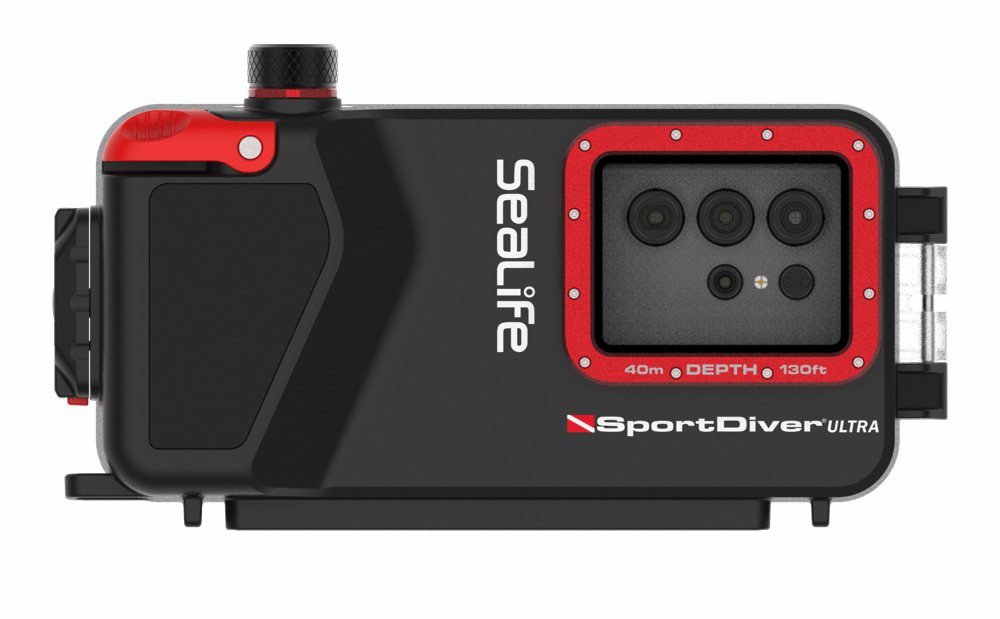 SeaLife - SportDiver ULTRA Underwater Smartphone Housing
SeaLife - SportDiver ULTRA Underwater Smartphone Housing
- Price A$ 599.00
-
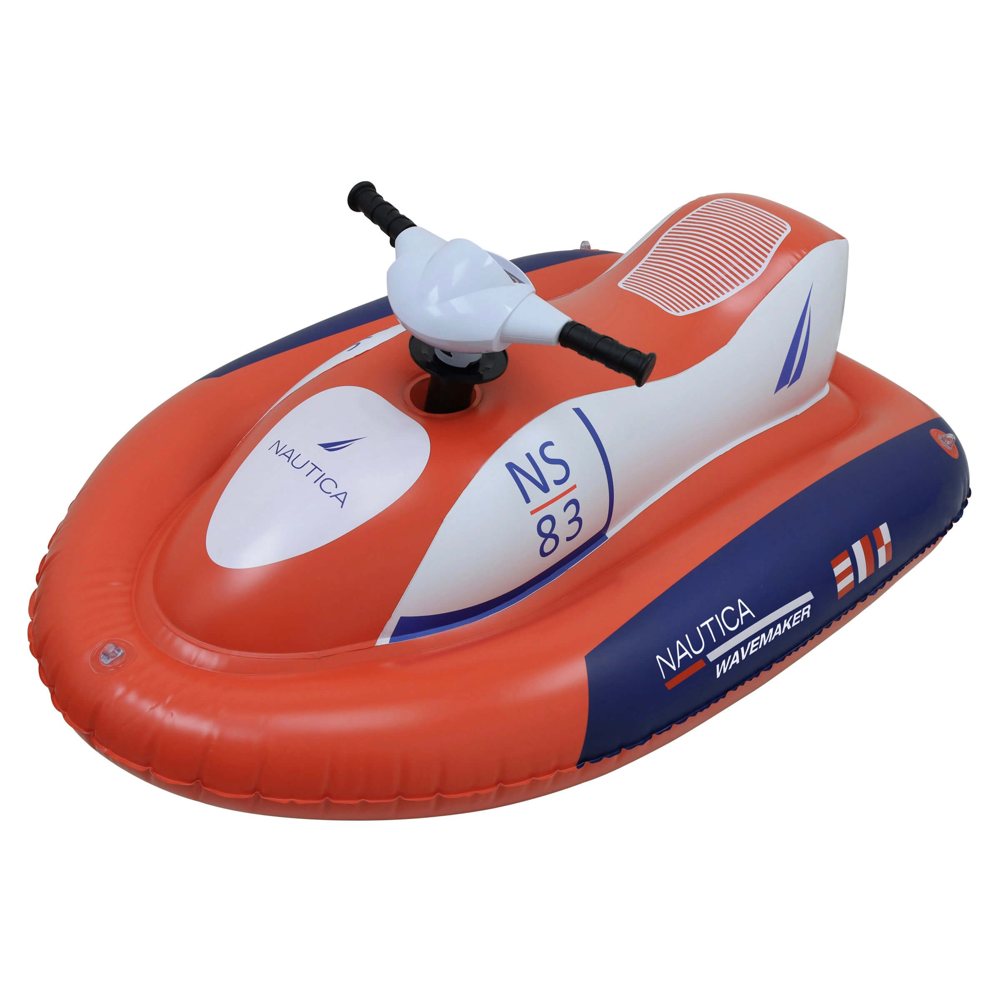 Nautica inflatable Jet Ski Wavemaker
Nautica inflatable Jet Ski Wavemaker
- Price A$ 499.00
In the Directory




